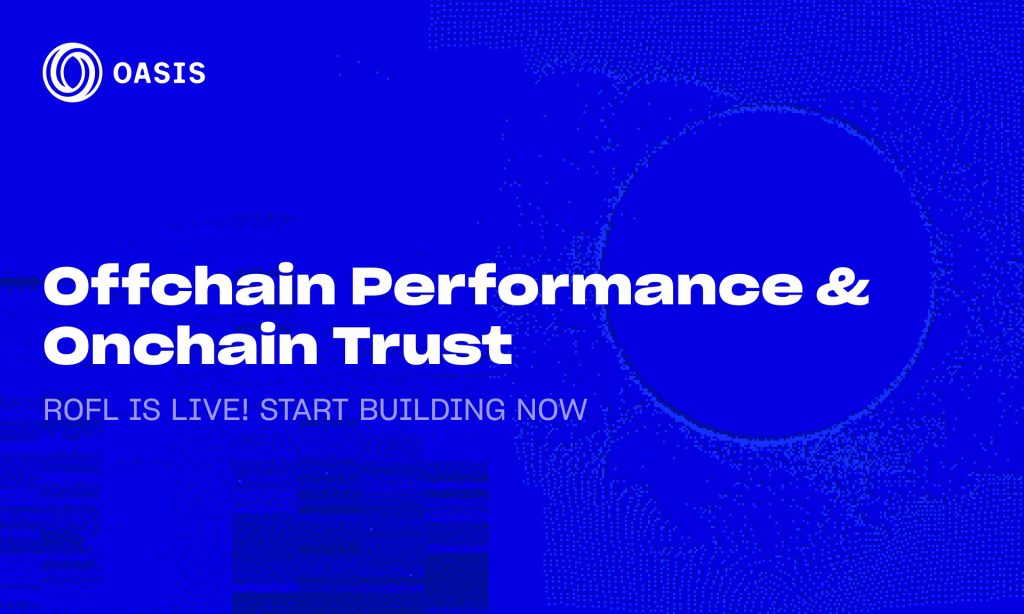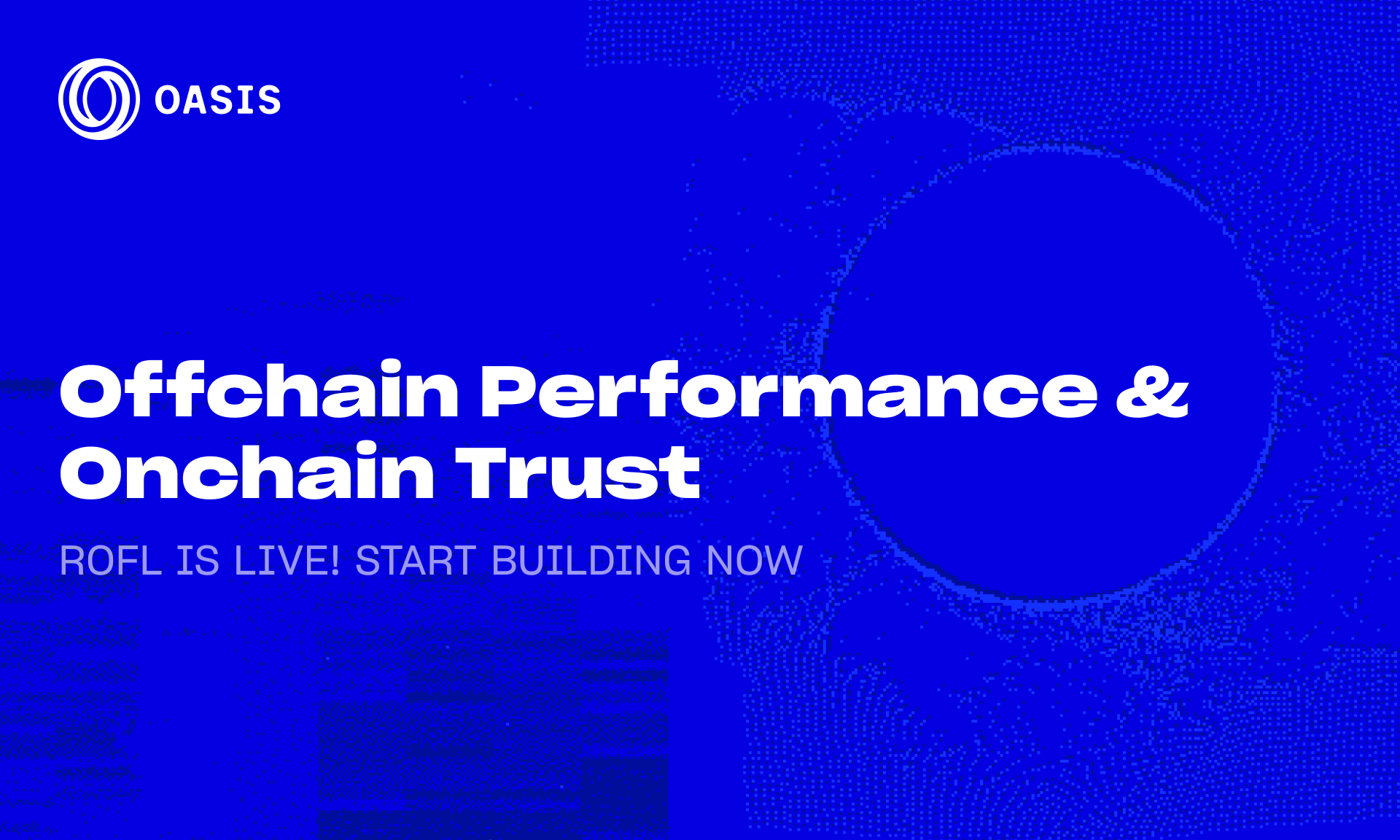
The intersection of Artificial Intelligence (AI) and blockchain technology presents a compelling vision for the future of decentralized applications. However, this convergence is not without its challenges. Traditional blockchain networks excel in providing transparency and security through on-chain computation, but their limitations in scalability and cost make them ill-suited for the intensive computational demands of AI. Conversely, off-chain computation offers the necessary speed and efficiency but lacks the inherent trust mechanisms of blockchain. Oasis Protocol’s Runtime Offchain Logic (ROFL) emerges as a groundbreaking solution, merging the strengths of both paradigms to create a trustless, verifiable, and privacy-preserving framework for AI applications. With the recent launch of its mainnet, ROFL is poised to redefine the landscape of decentralized AI.
The Scalability and Trust Dilemma in AI and Blockchain
The core challenge in integrating AI with blockchain lies in the trade-offs between scalability and trust. On-chain computation ensures that all transactions and computations are verified by every node in the network, providing an immutable and transparent record. This approach is ideal for applications where trust is paramount, such as financial transactions or identity verification. However, the computational overhead of on-chain processing makes it impractical for AI applications that require complex calculations involving millions or billions of parameters. The high costs and slow processing times of on-chain computation render it unsuitable for the real-time demands of AI.
Off-chain computation, on the other hand, addresses these scalability issues by performing complex calculations outside the blockchain. This approach leverages more powerful and cost-effective resources, significantly improving efficiency and reducing transaction fees. However, the decentralized nature of blockchain introduces a critical challenge: how can users trust the integrity of off-chain computations? Without a robust verification mechanism, there is no guarantee that the results have not been tampered with or that the computation was performed correctly. This lack of trust undermines the very principles that make blockchain valuable in the first place.
ROFL: Bridging the Gap with Trustless Off-Chain Compute
Oasis Protocol’s ROFL framework is designed to bridge this gap, offering a solution that combines the scalability of off-chain computation with the trust and verification mechanisms of blockchain. Positioned as the “Trustless AWS” for AI, ROFL provides a scalable and reliable compute layer for AI developers while retaining the security and privacy benefits of blockchain. At its core, ROFL enables developers to augment deterministic on-chain backends with verifiable off-chain applications. These applications are stateless, with support for encrypted persistent local volumes, and can perform expensive and non-deterministic computations.
The framework leverages several key features to achieve its unique capabilities. Trusted Execution Environments (TEEs), such as Intel SGX and TDX, create secure enclaves where computations can be performed in isolation from the rest of the system. TEEs provide a hardware-based root of trust, ensuring that the code executed within the enclave is protected from unauthorized access or modification. This hardware-level security is crucial for maintaining the integrity of off-chain computations.
Verifiable and Confidential Computing: The Backbone of ROFL
ROFL’s ability to provide verifiable and confidential computing sets it apart from other off-chain computation frameworks. Verifiable computation ensures that the integrity of off-chain computations can be cryptographically proven, allowing users to trust the results even though they were generated off-chain. This can be achieved through various techniques, such as zero-knowledge proofs or verifiable computation schemes. By providing cryptographic proof of the correctness of the computation, ROFL eliminates the need for users to trust the underlying infrastructure.
Confidential computing is another critical feature of ROFL, enabling developers to process sensitive data without revealing it to the underlying infrastructure. This is particularly important for AI applications that deal with personal or confidential information. By using TEEs and other privacy-enhancing technologies, ROFL ensures that data remains protected throughout the computation process. This level of privacy is essential for applications in healthcare, finance, and other industries where data sensitivity is a top priority.
Runtime Agnosticism: Flexibility for Developers
ROFL’s runtime agnosticism further enhances its versatility, allowing developers to choose the runtime that best suits their specific needs. Whether using the Sapphire runtime or other Oasis runtimes, developers can leverage ROFL’s capabilities to build applications that require both scalability and trust. This flexibility is crucial for the adoption of ROFL across various industries and use cases, as it allows developers to tailor their solutions to the unique requirements of their applications.
Use Cases: Unlocking New Possibilities for AI Applications
The unique capabilities of ROFL unlock a wide range of use cases across various industries. In decentralized finance (DeFi), ROFL can be used to build privacy-preserving applications, such as confidential lending and borrowing platforms or decentralized exchanges with enhanced privacy features. By leveraging ROFL’s confidential computing capabilities, users can protect their financial data from unauthorized access, ensuring that their transactions remain private and secure.
In healthcare, ROFL can enable secure and private analysis of medical data, facilitating the development of personalized medicine and improved healthcare outcomes. By using ROFL’s verifiable computation capabilities, researchers can ensure the integrity of their findings while protecting patient privacy. This is particularly important in an era where data breaches and privacy concerns are at the forefront of public discourse.
Supply chain management is another area where ROFL can have a significant impact. By leveraging ROFL’s verifiable computation capabilities, businesses can track and trace goods throughout the supply chain in a transparent and verifiable manner. This ensures the authenticity of products and prevents counterfeiting, which is a growing concern in global trade.
AI-powered crypto trading is another exciting use case for ROFL. Verifiable AI agents can analyze market data and execute trades automatically, providing users with a more efficient and profitable trading experience. The verifiable nature of ROFL ensures that the agents are operating according to predefined rules and that their performance can be independently verified, eliminating the risk of manipulation or fraud.
Building a ROFL App: A Developer’s Perspective
The Oasis documentation provides comprehensive resources to guide developers in building ROFL applications. The development process typically involves several key steps. First, developers must set up the development environment, which includes installing the necessary tools and libraries, such as the Oasis SDK and the ROFL CLI. This step ensures that developers have the right tools to build and deploy their applications.
Next, developers need to define the off-chain logic that will be executed within the TEE. This logic can be written in various programming languages, such as Rust or C++. The choice of language depends on the specific requirements of the application and the developer’s familiarity with the language. The off-chain logic is responsible for performing the complex computations that are not feasible to run on-chain.
The on-chain backend is another critical component of a ROFL application. This backend is responsible for interacting with the off-chain computation and verifying the results. Developers typically write smart contracts that can communicate with the ROFL framework, ensuring that the results of the off-chain computations are verified and recorded on the blockchain.
Once the code is written, it can be deployed to the Oasis Network and tested thoroughly to ensure that it functions correctly. This step is crucial for identifying any potential issues or vulnerabilities in the application. Developers can use the Oasis testnet to simulate real-world conditions and validate the performance of their applications before deploying them to the mainnet.
TDX Support: Enhancing Security and Privacy
The integration of Intel’s Trusted Domain Extension (TDX) into the ROFL framework further enhances its confidential computing capabilities. TDX provides a more robust and secure environment for running confidential workloads, making ROFL even more attractive for applications that require high levels of data protection. By leveraging TDX, ROFL can ensure that sensitive data remains protected throughout the computation process, even in the face of sophisticated attacks.
Conclusion: A New Era of Trustworthy AI
The launch of ROFL mainnet marks a significant milestone in the development of verifiable and privacy-preserving AI applications. By combining the scalability of off-chain computation with the trust and verification mechanisms of the blockchain, ROFL offers a compelling solution to the challenges facing the convergence of AI and blockchain. As the Web3 ecosystem continues to evolve, frameworks like ROFL will play an increasingly important role in enabling the next generation of decentralized and trustworthy AI applications. With its innovative approach and versatile capabilities, ROFL is poised to become a key enabler of the future of AI, unlocking new possibilities for developers and users alike. The promise of a trustless, verifiable, and privacy-preserving framework for AI is no longer a distant dream but a reality that is already shaping the future of decentralized applications.





